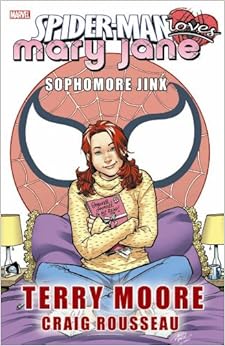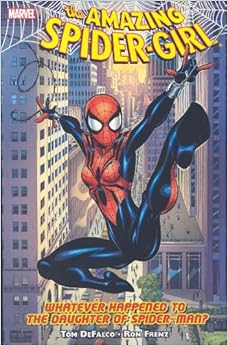re: News Stands
It wasn't the comic companies that abandoned the news stands... it was the newstands that abandoned comics. It's been well documented that the retailers themselves (news stands, grocery stores, convenience stores and drug stores) in the 70's and 80's wanted the increasingly precious rack-space dedicated to $2-$5 glossy magazine rather than a 50 cent comic book. And it's not like the comic companies didn't try just about anything to keep that real estate on the news stands... from the Dollar Comics line, multipacks, to packaging comics in magazine formats. Also worth noting as a factor in the decline: Affidavit Returns (google that with "comics").
Exception: Archie Comics, which survived in the traditional markets. Although I believe the female friendly content was the unique factor given it's placement in the grocery store check-out line next to Soap Opera Digest, and Oprah. Also: Digest Size and their timeless and endless reprint content which adequately services the traditional turn-over kids audience every few years. Marvel tried a last ditch in digest format around the mid-eighties with Spider-Man, GI Joe, and Transformers. DC had a good run in the 70's and early 80's as well with digests, but I think ultimately the more simplistic line-art of Archies survived shrinkage much more than the increasingly complex line-work and dialogue heaviness of Marvel and DC content.
Note: rather than sticking with their comfortable direct market niche, going to the news stand marketplace were factors in putting Comico and Now Comics out of business.
By the late 70's and early 80's, had Marvel and DC stuck with the news stand model, they would have been out of the comics business and became strictly licensing companies moving forward... DC in particular as a subsidiary Warner. It's believed that DC's survival as a comics company stemmed from the fact that the folks in charge at that juncture, maneuvered themselves under the Studio division, which was a bold visionary move... since that made them R&D for the lucrative film and television (and also licensing) arm, rather than publishing, particularly after Time Magazine and it's subsidiaries and distribution channels were merged with Warner.
Arguably, the direct market saved comic books as a medium for the next two decades. A life-raft before Bookstores became the new mainstream outlet, that is not dissimilar to the news stand model of yesteryear (bookstore returns have put quite a few companies out of business).
If anyone nowadays is looking for Spider-Man or any other comics for themselves or kids, most Bookstores these days have a well-stocked Graphic Novel section. As do most libraries. Often THREE in fact... in the Kids, Teen and Adult sections.
It wasn't the comic companies that abandoned the news stands... it was the newstands that abandoned comics. It's been well documented that the retailers themselves (news stands, grocery stores, convenience stores and drug stores) in the 70's and 80's wanted the increasingly precious rack-space dedicated to $2-$5 glossy magazine rather than a 50 cent comic book. And it's not like the comic companies didn't try just about anything to keep that real estate on the news stands... from the Dollar Comics line, multipacks, to packaging comics in magazine formats. Also worth noting as a factor in the decline: Affidavit Returns (google that with "comics").
Exception: Archie Comics, which survived in the traditional markets. Although I believe the female friendly content was the unique factor given it's placement in the grocery store check-out line next to Soap Opera Digest, and Oprah. Also: Digest Size and their timeless and endless reprint content which adequately services the traditional turn-over kids audience every few years. Marvel tried a last ditch in digest format around the mid-eighties with Spider-Man, GI Joe, and Transformers. DC had a good run in the 70's and early 80's as well with digests, but I think ultimately the more simplistic line-art of Archies survived shrinkage much more than the increasingly complex line-work and dialogue heaviness of Marvel and DC content.
Note: rather than sticking with their comfortable direct market niche, going to the news stand marketplace were factors in putting Comico and Now Comics out of business.
By the late 70's and early 80's, had Marvel and DC stuck with the news stand model, they would have been out of the comics business and became strictly licensing companies moving forward... DC in particular as a subsidiary Warner. It's believed that DC's survival as a comics company stemmed from the fact that the folks in charge at that juncture, maneuvered themselves under the Studio division, which was a bold visionary move... since that made them R&D for the lucrative film and television (and also licensing) arm, rather than publishing, particularly after Time Magazine and it's subsidiaries and distribution channels were merged with Warner.
Arguably, the direct market saved comic books as a medium for the next two decades. A life-raft before Bookstores became the new mainstream outlet, that is not dissimilar to the news stand model of yesteryear (bookstore returns have put quite a few companies out of business).
If anyone nowadays is looking for Spider-Man or any other comics for themselves or kids, most Bookstores these days have a well-stocked Graphic Novel section. As do most libraries. Often THREE in fact... in the Kids, Teen and Adult sections.



















Comment